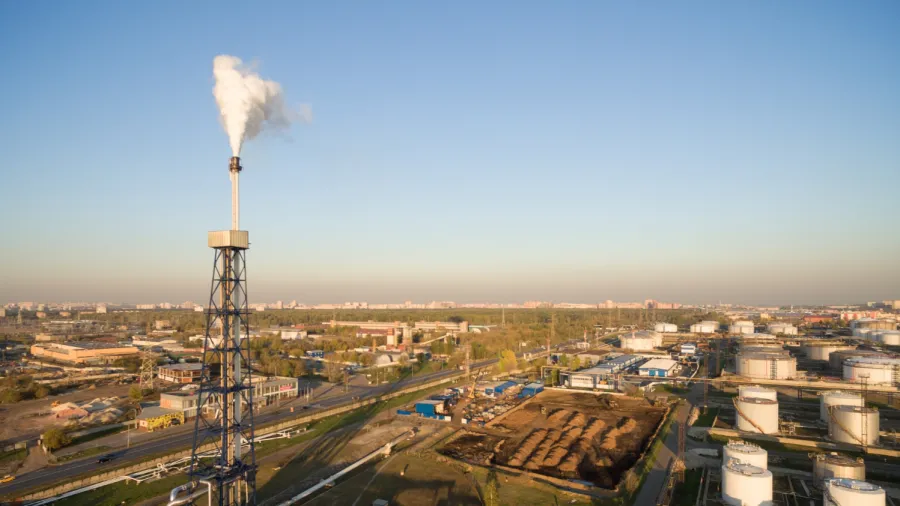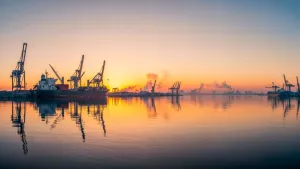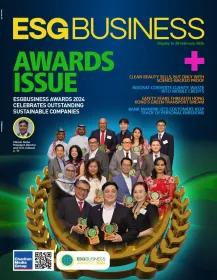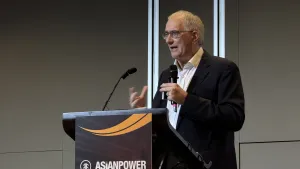
Why ASEAN needs a regional methane target
By Shania Esmeralda Manaloe, Anis Zhafran, and Muhammad ZaidanASEAN is not starting from scratch in tackling methane emissions.
When it comes to climate change, it's important to consider not just carbon dioxide (CO2), but also the significant impact of methane (CH4).
Methane is approximately 84 times more effective than CO2 at warming the atmosphere during the first 20 years after its release.
According to the 8th ASEAN Energy Outlook, ASEAN’s energy demand is projected to nearly triple from 2022 levels, reaching 1,108 million tons of oil equivalent (Mtoe) in 2050. The report also projects energy-related emissions to reach 5,127 million tons of CO2, with methane accounting for 15.7% of about 1,100 million tons of CO2 equivalent.
In the ASEAN energy sector, methane emissions are led by oil and gas at 56%, followed by coal at 44%. Looking more closely at the oil and gas value chain, methane is released at multiple points in upstream, midstream, and downstream, with the upstream being the largest contributor due to energy demand and potential leaks.
These emissions come from vented sources at 64.57%, followed by fugitive at 26.30%, and flared at 9.13%. Due to methane’s significant short-term warming potential, urgent reductions in methane emissions from oil and gas should be a key element of the region’s climate strategy.
ASEAN member states and national oil company commitments: Are these enough?
ASEAN is not starting from scratch in tackling methane emissions. Several member states and their national oil companies (NOCs) have made public commitments, joining global initiatives such as the Global Methane Pledge, the Oil and Gas Decarbonization Charter (OGDC), and the Oil and Gas Methane Partnership 2.0 (OGMP 2.0).
Amongst NOCs, Pertamina has pledged to reduce methane emissions by 40% by 2030, PETRONAS has committed to a 70% reduction across its natural gas value chain by 2030, and PTT targets a 20% greenhouse gas emissions reduction by 2030.
Beyond these individual pledges, several NOCs and government agencies have issued joint statements committing to decarbonisation with an emphasis on methane mitigation.
At the national level, Cambodia’s Methane Reduction Roadmap, adopted in 2025, set targets of reducing energy-sector methane emissions by 5% in 2030 and 6% by 2050, whilst Vietnam’s Action Plan for Methane Emission Reduction aims for a 30% cut below 2020 levels by 2030, focusing on oil and gas, coal mining, and fuel consumption. These national efforts are complemented by initiatives like the Methane Leadership Program (MLP), which brings together policymakers and industry to build technical capacity and share best practices.
Yet despite these steps, progress remains fragmented and insufficient. According to the Methane Management Roadmap for Oil and Gas in ASEAN, there is still a substantial 64% gap between current methane emission levels and the near-zero methane target set for 2030 by OGDC. The gap highlights the urgency for ASEAN to move beyond scattered national initiatives and establish a coordinated regional methane reduction target.
The importance of establishing a regional methane target in ASEAN
Despite this urgency, ASEAN still lacks a binding regional policy or target to close the methane gap. The Methane Management Roadmap for Oil and Gas in ASEAN offers guidance, but because it remains voluntary, progress is left to the discretion of individual member states.
Without a unified target, ASEAN may face challenges in achieving its climate goals and could potentially lag in the global efforts to reduce methane emissions.
Even when only half of the ASEAN countries are considered the major methane emitters, a regional target would still bring benefits. Setting a regional target would encourage regional NOCs and independent operators to establish their own methane reduction target, fostering a level playing field across the industry.
A unified commitment would also promote greater collaboration and knowledge sharing in methane management efforts across member states, leading to more effective emissions management strategies.
Furthermore, regional endorsement could attract more diverse sources of funding for methane abatement projects, showcasing ASEAN’s commitment to emissions reduction and supporting individual countries’ Nationally Determined Contributions (NDCs). This collective commitment could significantly contribute to the varied greenhouse gas emissions reduction goals outlined in individual countries’ Nationally Determined Contributions (NDCs).
The European Union has already shown that a region can successfully adopt a collective methane target through binding regulations, strict monitoring, and ambitious goals. ASEAN, too, can take inspiration from this precedent by designing a regional framework that reflects its own priorities and circumstances.
Types of methane regional targets for ASEAN
Should ASEAN choose to commit to a regional methane target, the next question is what form that target should take. One option is an absolute reduction target, like the European Union’s, which aims to cut methane emissions by 77% by 2030, regardless of production growth.
Another is an intensity-based target, such as the OGDC, which sets a collective goal of reducing upstream methane intensity to 0.2% by 2030. Both approaches have merit, and ASEAN can tailor them to regional and national contexts.
Importantly, this isn't a new concept for ASEAN. The region already has experience in setting collective energy goals through the ASEAN Plan of Action for Energy Cooperation (APAEC) Phase II. This includes an ‘aspirational target’ to achieve 23% renewable energy in the total energy mix and to reduce energy intensity by 32% by 2025, respectively.
Establishing a similar regional target for methane would extend this framework, aligning climate goals with ASEAN’s long-standing commitment to energy cooperation.
Challenges in adopting the regional methane target
However, turning this feasibility into reality will not be without challenges. A critical obstacle is the absence of a robust, standardised system for methane measurement, reporting, and verification (MRV) across ASEAN.
Without reliable and comparable data, it becomes difficult to set credible targets, track progress, or hold stakeholders accountable. The region’s governance model, rooted in voluntary cooperation, further complicates the adoption of binding commitments, as enforcement mechanisms remain limited.
But this gap also presents an opportunity. If ASEAN were to establish a robust MRV system, member states would generate verified methane datasets that could be integrated into their national inventories and, collectively, into a regional methane transparency database.
Such a platform would centralise emissions data, allow for consistent progress tracking, and help identify major leaks quickly.
Initiatives like the Methane Abatement Towards Sustainable Petroleum Industry (MAESTRO) dashboard, which help users identify methane emission sources across the region’s oil and gas sector, show that ASEAN has taken the right baby steps in this direction.
Implementing this would enable policymakers and companies to detect significant leaks more promptly, allowing them to translate data into actionable, low-cost abatement measures.
In fact, over 80% of methane abatement projects in ASEAN could be implemented at net negative cost, and the estimated 320,000 tonnes of methane emitted annually translate into nearly $87m in recoverable gas.
By linking robust MRV with economic incentives, ASEAN could transform fragmented national actions into a coordinated regional strategy, one that accelerates the energy transition, secures financial gains, and strengthens its global climate credibility.
Way forward: Commit and act
Methane is one of ASEAN’s most urgent climate challenges, yet current national actions remain fragmented and insufficient. To close the 64% gap to near-zero oil and gas upstream methane emissions by 2030, ASEAN must commit to a collective regional methane target.
Whether absolute or intensity-based, such a target would align national ambitions, provide a clear framework for accountability, and demonstrate that ASEAN is ready to lead on climate action.
ASEAN has a clear choice: work together and take strong action or miss the chance to close the 64% gap.














